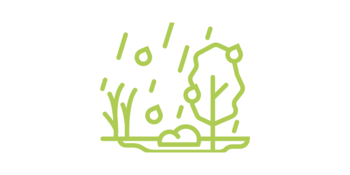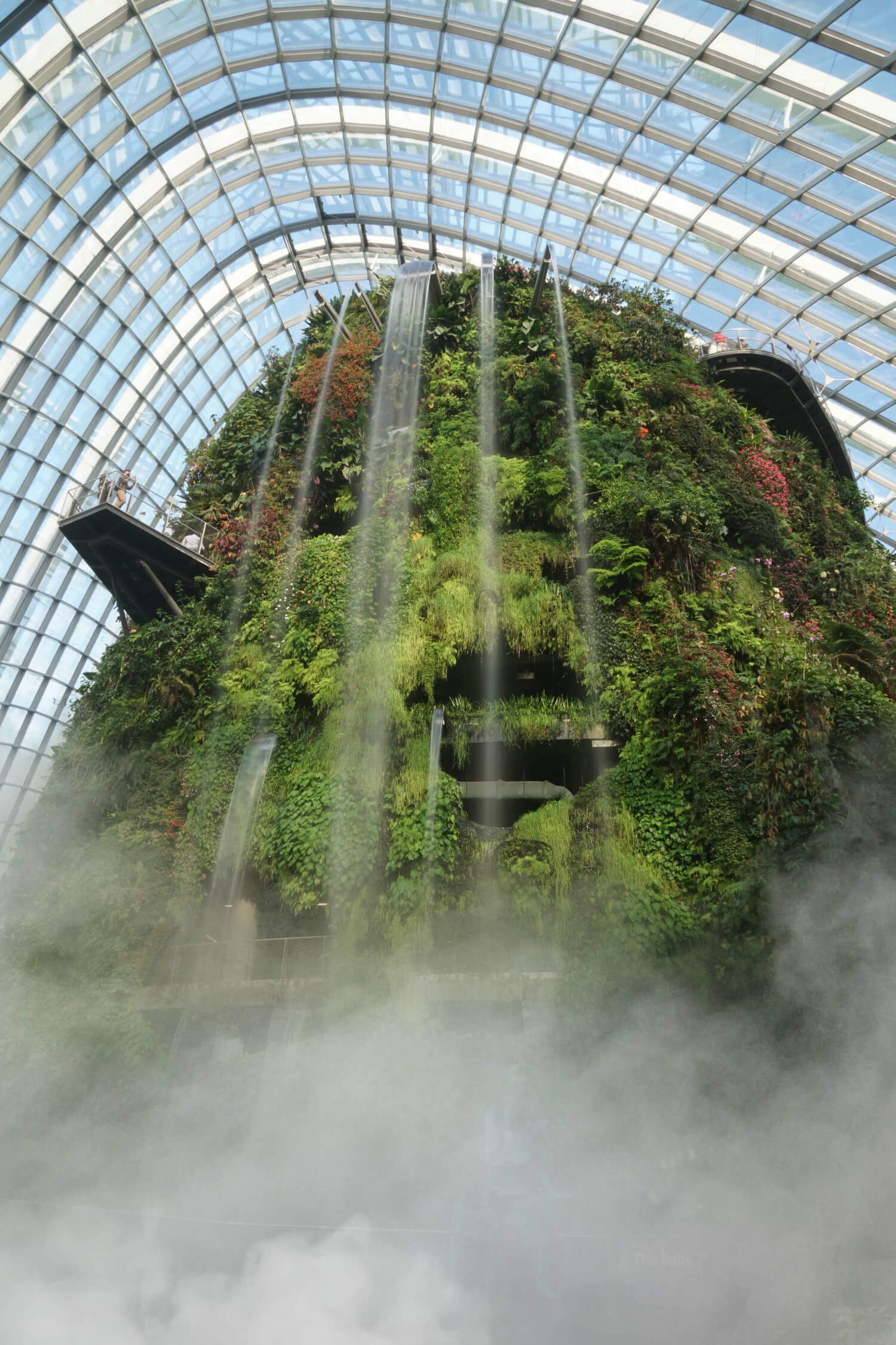NICE nature-based solutions
NICE will research nature-based solutions such as green walls, vegetable rooftops, rain gardens and hybrid subsurface wetlands, which will be further enhanced with bioaugmentation strategies, innovative filling media, new plants and designs, among other innovations.
In addition, NICE will develop a nature-based solutions modelling software, providing an of the functionality of different nature-based solutions and giving useful data for design and management.
All the data obtained from research and development (R&D) of innovative nature-based solutions, study of existing solutions and modelling will be integrated into novel guidelines and methodologies for design, implementation, integration and management of urban enhanced nature-based solutions for closed water loops.

Green walls and vegetable rooftops
Green walls are vertical structures made of planted containers usually attached to a façade of a building, allowing vegetation to grow all over the surface. Vegetable rooftops are similar structures, where a vegetated surface is installed in the roof using an insulation-waterproof membrane and a substrate where plants develop. Green walls and vegetable rooftops have been used for stormwater treatment, with recent research focusing on greywater treatment. Limited information is currently available for greywater reuse under real operating conditions.
NICE goal: Develop green walls and vegetable rooftops obtaining high quality water for reuse from greywater. Research: stressing conditions, novel designs, filling materials & plant combinations. Integration of bioaugmentation strategies for improved treatment performance at low temperatures and reactive filling media for increased emerging pollutant removal.

Rain gardens
Rain gardens are systems consisting of plants built close to impervious surfaces (paved surfaces, roads, etc.) to reduce stormwater runoff and temporarily hold rainwater, reducing peak flow to intercept, store, then release water outside peak flow times (rain/storm events) to reduce flood risks. Currently pollutant treatment and retention as well as the systems’ ecosystem services are often add-on values. Intercepting stormwater and combined sewer overflow systems for flood prevention offer the unique opportunity to treat and/or remove pollutants and protect the receiving water bodies. Nevertheless, the removal of emerging pollutants and pathogens and the regeneration of water for reuse are still very limited.
NICE goal: Develop a new generation of enhanced rain gardens for stormwater & combined sewer overflow systems based on R&D of treatment wetlands with reactive media and forced aeration. This novel approach will add a strong treatment component targeting standard- and emerging pollutants and pathogens to obtain high quality reusable water. Moreover, several configurations (media/hydraulic design/bioaugmentation) are studied.

Hybrid subsurface wetlands
Hybrid subsurface wetlands combine different types of constructed wetlands (e.g. vertical and horizontal) to achieve better treatment capacities due to the synergy of abiotic and biotic removal mechanisms. Hybrid subsurface wetlands have shown high potential to remove organic matter, due to interactions between, media, plants and microorganisms. Among hybrid subsurface wetlands, vertical ones usually have better microbial degradation as result of the better oxygenation originated by the wastewater flow. Despite the latest developments in hybrid subsurface wetlands for wastewater, stable and combined removal of pathogens, physiochemical and emerging pollutants under varied weather conditions are a challenge. For river water, most hybrid subsurface wetlands treatments are focused on organic matter and nutrients removal.
NICE goal: NICE hybrid subsurface wetlands for wastewater are based on R&D of different combinations of vertical and horizontal models, with absorber and low permeability media in combination with plants capable of enhanced pathogen removal and bioaugmentation strategies, resulting in high-quality water for reuse.

This project has received funding from the European Union's Horizon 2020 research and innovation programme under grant agreement No.101003765.
